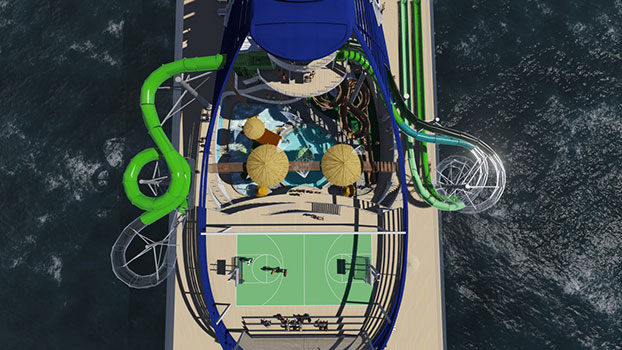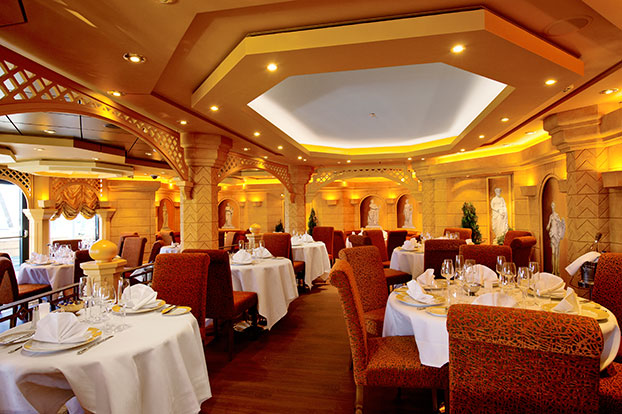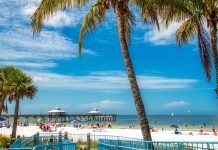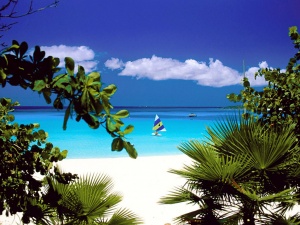June 23, 2015By: Susan Young
 |
| MSC Cruises CEO Gianni Onorato, along with MSC Cruises Executive Chairman Pierfrancesco Vago and Fincantieri CEO Giuseppe Bono, at the recent steel-cutting ceremony for the MSC Seaside. |
MSC Cruises is now making significant investment in the North American market, and earlier this week Travel Agent spoke one-on-one with Gianni Onorato, the brand’s CEO, in a phone interview. Onorato provided his “take” on MSC’s push into the market.
It comes during a week when MSC Book, the line’s new booking engine for the trade, is launching. In addition, this week steel was cut at the Fincantieri shipyard in Italy for what will become the MSC Seaside, a new class of ship designed specifically for the U.S. market.
Why is it so important for MSC Cruises to become more entrenched in the North American market? It’s already the most penetrated of all international cruise markets.
“MSC is a global company, an international company, and we realize we [must play] an important role in the most important market in the world – which is the North American market,” stressed Onorato.
He said the line’s focus will be “finding our own space and our own room in the market” and offering something a bit different than what the other lines are doing.
What is different about MSC’s product, from your perspective?
From Onorato’s perspective, the differences encompass “the ships that we’re introducing into the market, not only from the type of hardware, but also from the design of the ships — as MSC Seaside clearly shows — and also in terms of the onboard product, just to bring over the elegant and sophisticated Mediterranean style.”
For the North American guests, he said top draws on the ships will include food and entertainment as differentiating features, along with the ship’s comfort factor. Onorato said MSC Seaside will have the industry’s highest ratio of outside space for each single customer – more than 34.5 square feet per person.
“This ship will be a new ship with a very ambitious new standard of cabins,” he added, noting that guests will feel they’re in a new, trendy boutique hotel, much as they’d find in Europe or the U.S.
He also said MSC Cruises has invested in the ship-within-a-ship concept, MSC Yacht Club, which is “very well taken by our customers — with more spacious cabins, a more spacious restaurant and a reserved pool.”
He also said MSC Seaside will be a ship for families with dedicated areas set up and built together with such well-known brands as Chicco and Lego. The goal, he said, is to provide the best experience to younger customers.
For example, “we will have a dedicated kids’ only restaurant where adults will not be admitted,” Onorato said. “We will also have a number of cabins that can be considered as modular cabins, so that each family can build its own cabin size – up to 10 people.”

Will subsequent ships in the Seaside-class be dedicated to the North American market?
He said it depends a lot on the line’s capabilities, as well as how the Seaside is received by North American guests. Because the second Seaside-class ship is coming “so close” after MSC Seaside’s delivery, Onorato says there really isn’t adequate time to evaluate that thoroughly.
So the second Seaside-class ship will be positioned in Europe, and he added that the move also helps to satisfy the vocal desires of European travel agents.
So, for the third Seaside-class ship, what will happen? Will MSC consider North American positioning? “Absolutely, absolutely,” Onorato told Travel Agent. “And let’s not forget that we also have the Vista–class, which I think is the ship that the American market deserves to see and experience in the Caribbean as well.”
What North American ports would be of interest for future home porting?
MSC has plenty of options, said Onorato, who believes the line should keep all of those options open. MSC Cruises’ goal is to “create our own little niche in the market space in the North American market with ships offering a bigger variety of itineraries,” he stressed.
That could mean not only a home port in Miami but also perhaps New York or elsewhere, he said. In addition, he noted that MSC Cruises is not only looking at seven-night cruises, but also 10-night or longer itineraries as well – so the line can combine eastern and western Caribbean itineraries.
MSC Divina initially sailed from Miami with very low-ball fares, which negatively impacted the industry’s Caribbean pricing. Can agents expect to see higher price points on MSC Seaside?
“It’s a learning curve,” acknowledged Onorato, noting that the line now has more experience in the marketplace. In addition, “in the past year, the North American market was more of a tactical market [for MSC], not a strategic market,” he said. So he believes the thinking is a bit different now.
As for MSC Divina’s pricing, “we are starting to get the first positive results now,” he said. “That’s why we are starting so early to work on Seaside – to talk about Seaside and to present Seaside to the North American consumer market.”
He said MSC is confident that with its strong North American team and advertising efforts planned, the product will have strong visibility, not only for travel agents but also for consumers.
“For the first time, we’re going to have a TV campaign,” Onorato said. “This together with the beautiful ship that we’re going to place there, we’re very confident to be successful.”
What’s the estimated dollar value of the brand’s North American investment?
“I prefer not to comment,” Onorato responded.

Some consumers think of Costa Cruises and MSC Cruises, both brands with Italian heritage, as similar. How do you address that to provide market differentiation?
“We are addressing that by the level of investment, the ships that we are placing in the market and the level of the organization [within the U.S.] that we have in the marketplace today compared with the others. And we will show that with the kind of actions that we are going to take from here on out,” he said.
How do you see MSC positioned? Is it contemporary? Or premium?
Onorato told us that MSC aims for different levels of pricing based more on experience than simply product. He also emphasized that his brand has different levels of product on the same ships. So he believes agents and consumers see the line’s positioning in different ways, depending on the accommodations and the experiences those provide.
“MSC has the ship-within-a-ship concept with MSC Yacht Club, which [could be] characterized as premium,” says Onorato. That said, other customers having a different experience on the ship might see it as a contemporary product.
What do you think of this $type?










